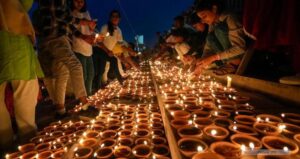When it Comes to Reopening Schools, What are We Waiting for?
Tanya Aggarwal
We know more about COVID-19 today than we did in March 2020, when schools were first closed.
We know that the impact of this extended closure is devastating. The delta variant has already ravaged India. Cases are low, except in some areas and adult vaccination coverage is increasing. Everything else is open. SARS-CoV-2 is expected to become endemic, though this theory has its challengers.
As an epidemiologist told Nature, eradication is “…a lot like trying to plan the construction of a stepping-stone pathway to the Moon. It’s unrealistic.”
Domain experts at AIIMS, ICMR, Indian Academy of Paediatrics, Indian Association of Preventive and Social Medicine, NITI Aayog, UNICEF and WHO have spoken. School is essential and children’s vaccination is not a prerequisite.
Why then are schools still closed? What are decision-makers waiting for?
The Union government left the matter of school openings entirely to states despite education being a concurrent subject under the constitution. Instead of encouraging states to prioritise in-person education, the Union government waxes eloquent about the “success” of online education. States with tourism links were offered vaccines on priority. Many states have opened schools but others, such as Delhi, continue to dither with no indication of the goalpost for junior classes.
A statement by Arvind Kejriwal, the Delhi chief minister, in mid-July, 2021 tying school opening to vaccination created more confusion than certainty; no one knew whose vaccination he meant. Delhi’s education minister, Manish Sisodia, opened a public consultation on the matter, resulting in an overwhelming pro-opening majority. The Delhi government took cover under an expert panel, which in late-August recommended a phased reopening of schools; however, Kejriwal threw a spanner in the works by declaring, at a cinema inauguration, that he could not risk children’s health.
Children are not banned from cinemas, only from school.
Nevertheless, a phased reopening began with classes nine to 12 on September 1. Classes six to eight did not begin on September 8, as scheduled, for undisclosed reasons.
On September 15, the Delhi Disaster Management Authority (DDMA) bowed to the business exhibitions’ lobby and on September 29, permitted festive celebrations, but kept schools closed for students up to class 8. In mid-October, Kejriwal wrote to the lieutenant-governor of Delhi, citing low COVID-19 cases and urging him to follow the example set by neighbouring states. This was, however, for Chhath Puja, not for schools. Primary school children remain forgotten, despite facing the lowest risk from COVID-19, but maximum losses in terms of nutrition, social play and foundational skills.
In mid-August, a student approached the Supreme Court of India with an ambitious prayer: to reopen schools across India. Files gathered dust until September 20, when the court encouraged the student to withdraw the petition and focus on studying. The Supreme Court separately asked the Kerala government’s counsel to assure the court that not a single student would be infected in offline exams. Were such assurances demanded when construction sites, factories, markets and public transport were opened? Indian courts are transitioning to physical opening, but surely the Chief Justice of India has not guaranteed that not a single advocate will be infected.
Although every other activity involves human lives, these did not need extensive deliberations to open. Either they were classified as essential or they pleaded economic distress. The reality is that education is not seen as essential. After all, India slashed its education budget in a pandemic year.
Private schools have no incentive to lobby for an opening; fees are capped (in Delhi, for example) and governments and parents are ready to penalise them if even one COVID-19 case occurs. In any event, private schools do not have the luxury of pleading economic distress; education is seen as a social service and they would come off as greedy. As for children’s future earnings losses, this is too remote a consequence.
The only factor that could have possibly turned the tide is the voice of the prominent or the affected. Respected industrialists Anand Mahindra and Rishad Premji tried but failed. Children have no voice. Parents are divided, with some leaning towards online education. Most such parents have access to online education; devices, internet, quiet spaces and so on. No amount of science is likely to change their minds. Nevertheless, they are entitled to their opinion and I respect their choice.
Other parents, who are in favour of in-person education, are a sizeable lot. For example, in Delhi, 90% of the 8,00,000 parents of government school children and 68% of the 33,000 who emailed Sisodia were in favour of opening of schools. Based on a survey of approximately 1,400 underprivileged households across 15 states and Union Territories, the ‘Locked Out: Emergency Report on School Education’ states 97% of rural parents and 90% of urban parents want schools to open.
Political leaders perhaps fear backlash from courts, a section of parents who ask for unrealistic guarantees of zero COVID-19 cases and from oppositions who gleefully cash in on the angst of these parents. The same Aam Aadmi Party that promises education in Delhi questioned Punjab’s decision to open schools, asking if Punjab was completely free of COVID-19. It is easier to pander to the fear of COVID-19 and aspire towards a utopian zero-COVID or 100% vaccinated India than to take an evidence-based decision to open schools. It is easier to celebrate the success of online education than to acknowledge a survey that reports only 8% of rural children are regularly studying online and about half are unable to read a few words.
It is easier to allow everything else to open than to acknowledge that adults take infections home to their children. It is easier to reiterate that we are a ‘Digital India’ than to fix the problem. Long-term consequences simply do not feature in political calculations; keeping schools closed is low risk whereas opening them is a high-risk gamble for a politician’s future.
Based on UNESCO data, India ranks third in the ignoble competition for the longest school closures (behind Uganda and Nepal). We have learnt to live with dengue, influenza, accidents and other risks. The second wave was devastating but we are learning to live with SARS-CoV-2, everywhere except schools. The collective apathy to the state of our children is a disservice to their futures – to India’s future. It is time to stop asking for guarantees. In life, there are no guarantees, only risk mitigation.
A zero-COVID-19 India is as much of a pipe dream as a digital India. According to scientists, COVID-19 vaccination for children is not a precondition for attending school. Why are children being deprived of their childhood and a meaningful education almost 600 days into this pandemic? What are we waiting for?
(Tanya Aggarwal is a New Delhi-based lawyer. She is an alumnus of the National Law School of India University, Bengaluru, and Harvard Law School. Courtesy: The Wire.)
❈ ❈ ❈
Meanwhile, another article, Open Campuses! Online Education is Hurting the Poor Students: AIFRTE, by Ravi Kaushal, published on Newsclick, reports a protest by AIFRTE demanding reopening of schools:
The iconic building in the national capital hosting the Ministry of Education headquarters witnessed a protest by the All India Forum for Right to Education (AIFRTE) on Thursday (Oct 21, 2021). The forum maintains that closed schools and campuses are destroying an entire generation of poor students by not giving them access to physical classes.
Singh, an M. Phil student at Centre for Economic Studies and Planning, Jawaharlal Nehru University, told NewsClick that learning has taken a toll due to this closure.
”The universities have already cut down the syllabus by half, and the rest is taught through dysfunctional classes where one cannot clear their doubts. They are only talking about online classes on paper. In reality, they have not given access to online journals and publications to students. Some of the students I know quit their studies because they hardly gained anything out of it,” Singh said, adding that the crisis should be seen not only from an education perspective but also from an employment perspective.
“The students who could achieve something through self-studies are also suffering because they don’t have access to study space. Some companies are now openly saying that they would not be employing the students passing in the pandemic period. It is a crisis of both education and employment.”
Sujeet Kumar, who recently completed his Masters in Buddhist Studies from Delhi University, told NewsClick that students are suffering mentally as well as socially.
“It is mental torture to compel a student to listen to online classes when they cannot get proper signals, let alone high-speed internet, in rural areas. The students could interact with each other and clear their doubts in physical classes. No such thing is happening now. For girl students, pursuing education at home is a double barrier. Thanks to a patriarchal upbringing, everybody in the household expects the girls to do household chores. In cities, they could study without these hassles. That freedom is gone now,” Sujeet said.
Prof. Madhu Prasad, former professor of Philosophy at Zakir Hussain College, believes that the perusal of online education without ground reality will lead students nowhere.
”Let me quote two facts; only 8% of families with children in the age group 5-24 have internet access, and 27% of households are living in just one room. When you club these facts, you find a horrible state of education where everyone is a loser,” Prasad said.
When asked if she saw it as a blow to diversity, she remarked, ”When the students from different backgrounds, including Dalit, Adivasi and other marginalised communities, converged, they brought a whole lot of diversity in academics. It helped us in understanding the different dynamics of poverty and its impact. It made academics rich. What are you going to achieve with a homogeneous set of urban, affluent students?”
The forum, in its memorandum to the Ministry of Education, said, “It is appalling that whereas the Union and state governments have taken all steps to re-open markets, malls, bars, hotels and cinemas, no steps have been taken to ensure that educational institutions are opened with sufficient health-checks in place to assure students, parents and teachers of their safety. The tragic consequence of this unnecessary closure is that lakhs of school and college students have simply had to drop out of educational institutions, and a large number have had to join the labour force in lowly paid jobs in an extremely hostile employment situation with unemployment at its highest in more than 45 years. All that Union and state governments are concerned about is how exams are going to be held and not about how the academic activities of the students are going to be restored. Without recourse to their teachers, with no access to libraries and with the totally inadequate so-called online ‘solution’ to the problem, the pressure on students to appear in these exams has created widespread psychological anxieties and even led to tragic suicides.”




